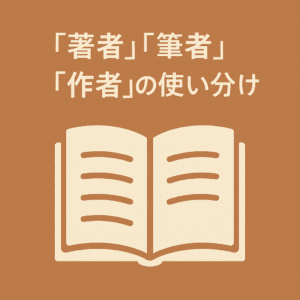Comparing Things in Japanese: 「〜より」 vs 「〜のほうが」N5
In Japanese, when you want to say that something is more or better than something else, you often use:
日本語で何かを比較する際に、「〜より」と「〜のほうが」がよく使われます。
- 〜より
- 〜のほうが
They both help you compare two things, but each has a different focus.
どちらも二つのものを比較するのに役立ちますが、それぞれ焦点が異なります。
Let’s learn how to use them with simple examples and explanations.
簡単な例文と説明で、それらの使い方を学びましょう。
—Sentence Pattern 1:
Aは Bより ~です。
“A is more/less ~ than B.”
「AはBより〜です」:「AはBより〜だ/である。」
このパターンは**A**に焦点を当て、**B**と比べてどうかを説明します。
Examples:
コーヒーは おちゃより にがいです。
(こーひー は おちゃ より にがい です。)
→ Coffee is more bitter than tea.
→ コーヒーはお茶より苦いです。
ふゆは なつより すきです。
(ふゆ は なつ より すき です。)
→ I like winter more than summer.
→ 冬は夏より好きです。
Sentence Pattern 2:
Bのほうが ~です。
“B is more ~.”
「Bのほうが〜です」:「Bのほうが〜だ/である。」
The comparison target (A) is often omitted if it’s already understood.
このパターンは、好ましい、またはより強い項目である**B**に焦点を当てます。
比較対象(A)は、文脈から理解できる場合、しばしば省略されます。
Examples:
(コーヒーより)おちゃのほうが にがくないです。
→ Tea is less bitter (than coffee).
→ (コーヒーより)お茶のほうが苦くないです。
※“コーヒーより” is omitted because it’s clear from context.
※「コーヒーより」は文脈から明らかなため省略されています。
にくのほうが すきです。
(にく の ほう が すき です。)
→ I prefer meat. (Compared to something already known.)
→ 肉のほうが好きです。(すでに知られている何かと比較して。)
What’s the Difference?
違いは何でしょうか?
| Pattern | Focus | Use When… |
|---|---|---|
| Aは Bより ~です。 | A | You want to describe or talk about A |
| Bのほうが ~です。 | B | You want to emphasize or recommend B |
Both are grammatically correct and often mean the same thing, but the difference is in what you want to highlight.
どちらも文法的に正しく、しばしば同じ意味になりますが、違いはあなたが何を強調したいかにあります。
—The “Spotlight” in Conversation
会話における「スポットライト」
When using these phrases, think about where you want to put the “spotlight” in your conversation. Which item do you want to highlight?
これらのフレーズを使うとき、会話の中でどこに「スポットライト」を当てたいかを考えてみましょう。どの項目を強調したいですか?
-
**「AはBより〜です」**: The nuance is, “I’m talking about A. A is like this when compared to B.” It’s suitable for objective facts or descriptions.
「AはBより〜です」: 「Aについて話しています。AはBと比べるとこんな感じです」というニュアンス。客観的な事実や説明に向いています。 -
**「Bのほうが〜です」**: The nuance is, “Ultimately, B is better!” or “I recommend B!” It feels natural when you want to emphasize your opinion or preference, or recommend one option among choices.
「Bのほうが〜です」: 「結局、Bがいいんです!」「Bをおすすめします!」というニュアンス。自分の意見や好みを強調したいとき、あるいは選択肢の中から一つを推奨したいときに自然です。
—
Summary: Tips for Usage
結論:使い分けのヒント
While both can often convey the same meaning, considering “what you want to convey most” will lead to more natural Japanese.
どちらを使っても意味が通じることは多いですが、「何を一番伝えたいか」を考えると、より自然な日本語になります。
- If you want to explain **A’s information in detail → Use 「〜より」**
- If you want to **choose B or emphasize B → Use 「〜のほうが」**
Aの情報を詳しく伝えたい → 「〜より」
Bを選びたい、Bを強調したい → 「〜のほうが」
By using the simple term “spotlight” to clarify what is being focused on, it should be more intuitively understood.
このように、シンプルに「スポットライト」という言葉を使って、何に焦点を当てているのかを明確にすることで、より直感的に理解してもらえるかと思います。
Comparing the Two:
二つの比較:
| 日本語(にほんご) Japanese |
English |
|---|---|
| コーヒーは おちゃより にがいです。 | Coffee is more bitter than tea. |
| おちゃのほうが にがくないです。 | Tea is less bitter. |
Practice Time!
練習の時間!
Try writing both types of sentences for these pairs:
以下のペアについて、両方のタイプの文を書いてみましょう:
- ピザ vs すし
- いぬ vs ねこ
- でんしゃ vs くるま
For example:
例えば:
ピザは すしより すきです。
すしのほうが すきです。
Key Tip:
重要なヒント:
Even when you say **「Bのほうが〜です」**, you are still comparing to A, but you often omit **Aより** when the listener already knows it.
「Bのほうが〜です」と言うときでも、あなたはまだAと比較していますが、聞き手がすでに知っている場合、Aよりを省略することがよくあります。
Summary Chart
まとめ表:
| 文けい(ぶんけい) Sentence Pattern |
意味(いみ) Meaning |
注目(ちゅうもく) Focus |
|---|---|---|
| Aは Bより ~です | A is more/less ~ than B | A |
| Bのほうが ~です | B is more ~ (than A) | B |
🌞 トライアルレッスンのご案内 Trial Lesson Information
はじめての方でも安心してください。
トライアルレッスンは、雰囲気や学習スタイルを知っていただくための体験です。
「ちゃんと話せるかな?」「レベルが合うかな?」と心配しなくても大丈夫!
トライアルレッスンは人気のため、希望の日がすぐに埋まることがあります。
まずはぜひ早めにご予約ください。😊
Even if this is your first lesson, don’t worry!
The trial lesson is a chance to get familiar with the atmosphere and my teaching style.
Wondering if you can speak well or if the level is right? No problem!
Trial lessons are popular, so your preferred date may fill up quickly. We recommend booking early. 😊
「希望した日がすでに授業でいっぱい…」というときは、
👉 お問い合わせフォーム / Contact Form からご連絡ください。

